Curious about the AI chatbot showdown?
ChatGPT vs DeepSeek – Which one is better for conversations, coding, and content creation? Discover their strengths, weaknesses, and which AI assistant suits your needs best in 2025.
Table of Contents
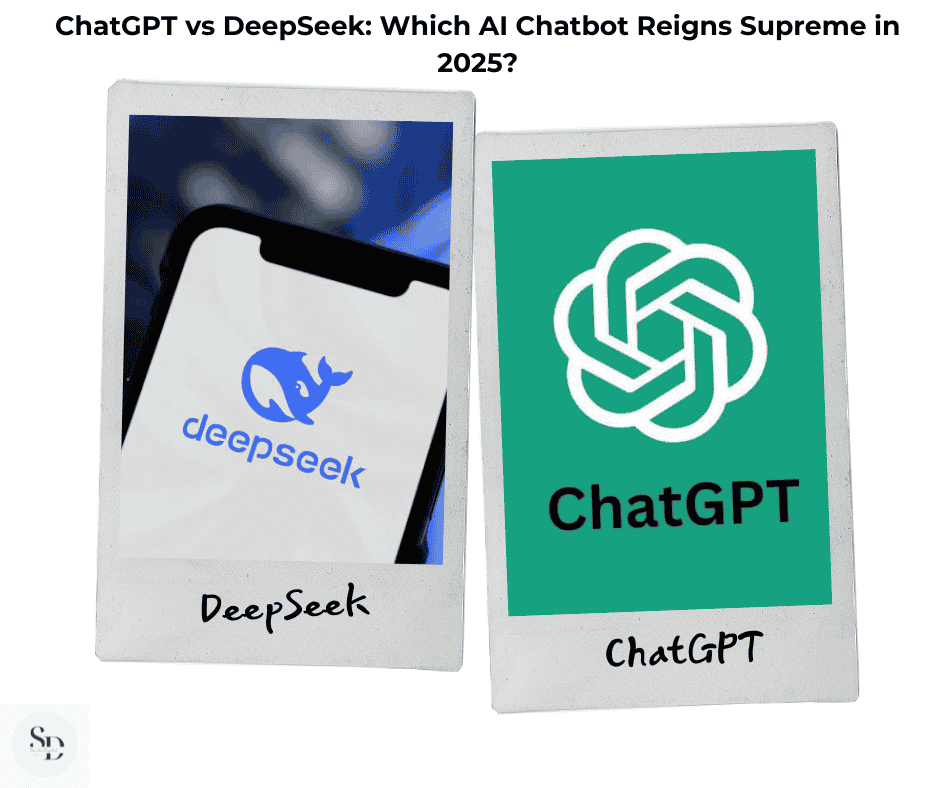
Introduction
Artificial Intelligence has transformed the way we interact with technology, and chatbots are leading the revolution. Among the top contenders in 2025, ChatGPT and DeepSeek have emerged as two of the most advanced AI-powered conversational assistants. While ChatGPT, developed by OpenAI, has been a dominant force in natural language processing and content generation, DeepSeek is a rising competitor that promises impressive capabilities in reasoning, multilingual support, and deep contextual understanding.
But which one truly stands out? Is ChatGPT still the best AI assistant, or has DeepSeek surpassed it with its cutting-edge features? In this blog, we’ll compare ChatGPT vs DeepSeek on key aspects such as:
Conversational Ability – Which chatbot provides more natural and accurate responses?
Creativity & Content Generation – Which AI is better for writing blogs, poems, and scripts?
Coding & Technical Skills – Which AI handles programming queries more effectively?
Multilingual Support – Which chatbot supports more languages with higher accuracy?
User Experience & Accessibility – Which one is easier to use and integrate into workflows?
Whether you’re a developer, writer, researcher, or just an AI enthusiast, this comparison will help you decide which AI chatbot suits your needs best. Let’s dive into the battle of ChatGPT vs DeepSeek and uncover their strengths and weaknesses!
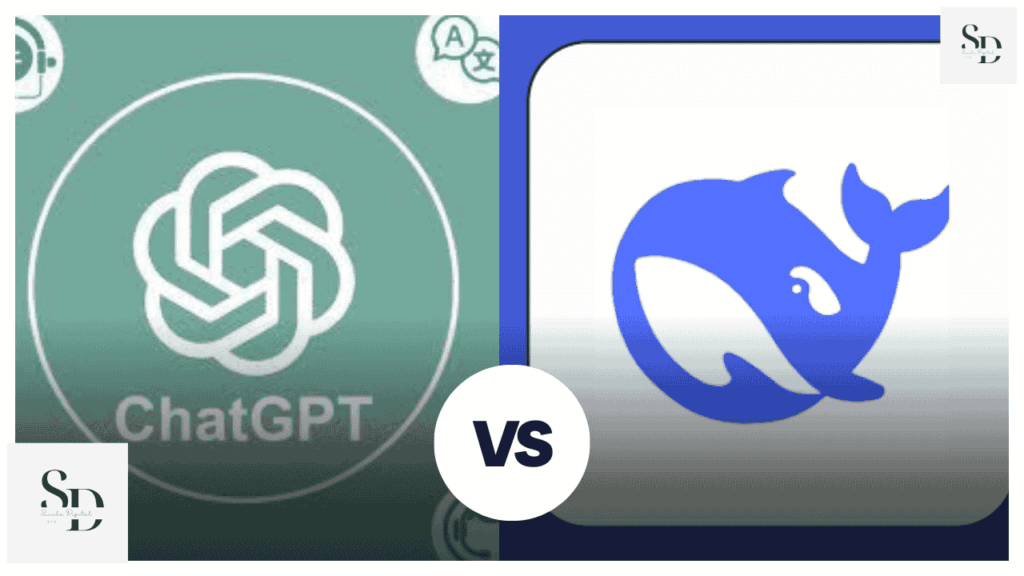
What is ChatGPT?
ChatGPT is an advanced AI-powered conversational model developed by OpenAI. It is based on the GPT (Generative Pre-trained Transformer) architecture, which enables it to generate human-like responses in text form. OpenAI, a research company based in the United States, started developing GPT models in 2018, with ChatGPT officially launched in November 2022.
ChatGPT quickly gained popularity due to its ability to understand natural language, generate creative content, and assist in various fields like education, writing, coding, and customer support. Over time, newer versions of ChatGPT have been introduced, improving its accuracy, efficiency, and conversational depth.
Currently, ChatGPT is being explored in multiple areas, such as:
Education & Learning (answering questions, tutoring)
Content Creation (writing articles, poems, stories)
Programming Assistance (debugging, generating code)
Customer Service (AI chatbots for businesses)
Healthcare Information (providing basic health-related guidance)
What is DeepSeek?
DeepSeek is another large language model that has been developed as an alternative to existing AI chatbots. It was created by a Chinese AI research lab, with a focus on deep reasoning, structured responses, and factual accuracy. The development of DeepSeek began in 2023, and it gained worldwide attention in 2025 due to its efficiency in handling technical and research-based queries.
DeepSeek specializes in logical problem-solving, mathematical computations, and fact-based responses, making it a strong competitor in the AI space. It has been gaining traction in areas like:
Scientific Research & Analysis (providing data-driven insights)
Programming & Algorithm Development (assisting in complex coding)
Multilingual Support (focused primarily on English and Chinese)
Business Intelligence (analyzing trends, assisting decision-making)
Legal & Financial Assistance (offering structured legal and financial advice)
While DeepSeek is still developing, it has quickly become a powerful tool for users looking for in-depth, logically sound answers.
Platforms Where ChatGPT and DeepSeek Can Be Used
Both ChatGPT and DeepSeek are accessible across multiple platforms, allowing users to integrate AI into different aspects of their work and daily life.
ChatGPT is available on:
Web Browsers – Through OpenAI’s official website
Mobile Apps – Available on iOS and Android
API Integration – Used by developers in various applications
Third-Party Tools – Integrated into apps like Microsoft Copilot and other software solutions
DeepSeek is available on:
Web Interfaces – Provided through research labs and AI platforms
API Services – Used for enterprise solutions and technical research
Mobile & Desktop Applications – Certain versions may be integrated into existing AI applications
Uses of ChatGPT and DeepSeek
Both AI models can be used in multiple ways, depending on user needs.
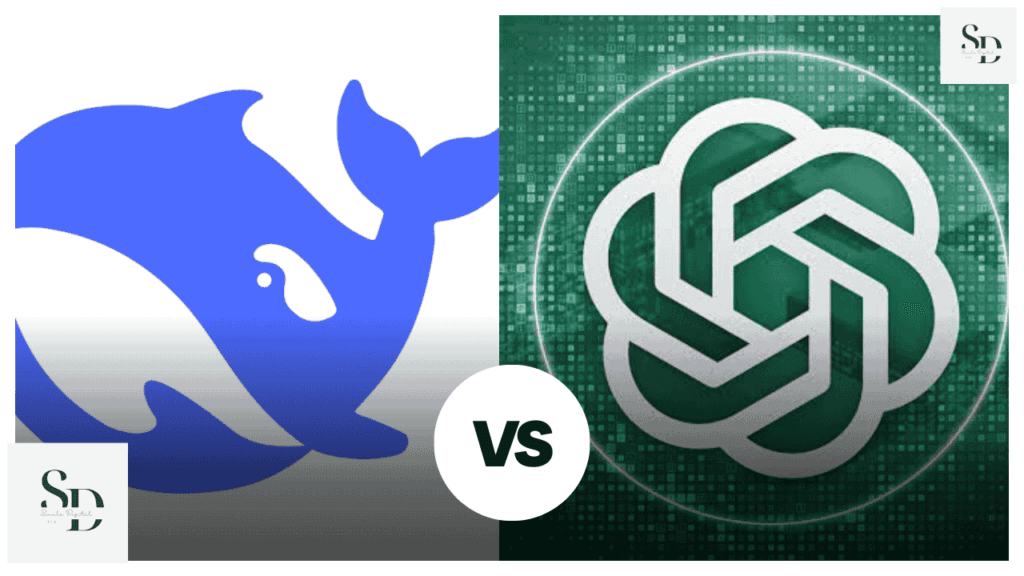
Uses of ChatGPT
Chatbot Assistance – Used in customer service to provide automated responses
Creative Writing – Helps in writing stories, blogs, and social media content
Learning & Tutoring – Acts as a virtual tutor for students
Code Debugging & Generation – Supports programmers with AI-generated code
Productivity & Task Management – Can summarize documents and manage schedules
Uses of DeepSeek
Technical Research – Provides precise, structured responses for research-based work
Mathematical Problem-Solving – Assists in solving complex equations and algorithms
Data Analysis – Helps businesses in making data-driven decisions
Legal & Financial Guidance – Offers structured legal and financial information
Fact-Checking & Logical Reasoning – Ensures information is backed by logical accuracy
ChatGPT vs DeepSeek: A 15-Factor Detailed Comparison
Artificial Intelligence (AI) chatbots have transformed digital communication, enabling advanced text generation, problem-solving, and interactive conversations. ChatGPT and DeepSeek are two AI models that provide conversational assistance, coding support, creative writing, and more.
1. Response Accuracy & Context Understanding
Response accuracy and the ability to understand context are fundamental for any AI chatbot. The effectiveness of an AI model depends on how well it interprets user queries, retrieves relevant information, and provides meaningful responses.
ChatGPT: Trained on a vast dataset, ChatGPT generates structured and contextually relevant responses. It handles general knowledge questions well but sometimes struggles with highly niche or technical topics. It can provide misleading information if the question is outside its training data, though newer versions offer better fact-checking mechanisms. Its ability to remember short-term context during a conversation improves user experience, but once the session ends, the memory resets.
DeepSeek: Built with deep reasoning capabilities, DeepSeek focuses on logical and factual accuracy. It uses structured reasoning to answer complex queries, making it suitable for research-based topics. However, its responses can sometimes be overly analytical, missing the conversational fluency that ChatGPT provides. While DeepSeek attempts to process complex multi-part queries effectively, it may not always interpret ambiguous questions as well as ChatGPT does.
2. Conversational Flow & Human-Like Interaction
The ability to engage in natural conversations is essential for chatbots, particularly for users who require an AI that feels interactive and intuitive.
ChatGPT: Designed to mimic human-like conversations, ChatGPT generates responses that feel fluid, engaging, and adaptive. It understands humor, emotions, and tone shifts, making it ideal for general conversations, storytelling, and informal interactions. ChatGPT can also engage in multi-turn dialogues where it remembers previous statements (within the session), improving conversation flow. However, it can sometimes produce responses that sound overly generic.
DeepSeek: While DeepSeek is proficient in structured discussions, it tends to sound more robotic and formal. Its emphasis on logical processing sometimes results in responses that are correct but lack personality. Unlike ChatGPT, DeepSeek does not always adapt its tone based on user input, making interactions feel less dynamic. However, for professional or technical discussions, its precision can be an advantage.
3. Content Generation & Creativity
AI is frequently used for content creation, including blog writing, storytelling, poetry, and marketing copy. Creativity is a major deciding factor for users who require AI-generated content.
ChatGPT: One of ChatGPT’s strongest features is its highly creative text generation. It can produce compelling narratives, unique poems, engaging articles, and even humorous dialogues. The model understands literary devices and adapts its style based on user prompts. However, since its content is generated based on existing patterns, some responses may feel formulaic.
DeepSeek: While DeepSeek also generates content, it leans more toward structured and fact-based writing. Its content is often direct and to the point, making it better suited for technical writing, research-based articles, and structured reports. However, it lacks the same level of imaginative storytelling and artistic expression that ChatGPT offers.
4. Coding & Programming Assistance
Developers frequently use AI chatbots for code generation, debugging, and explanations of programming concepts. The quality of programming assistance varies between models.
ChatGPT: ChatGPT provides detailed code explanations and supports multiple programming languages, including Python, Java, C++, and JavaScript. It helps debug code by analyzing errors and suggesting solutions. Additionally, ChatGPT can explain complex programming concepts in simple terms, making it a valuable tool for both beginners and experienced coders. However, it may occasionally generate incorrect code or overlook certain edge cases.
DeepSeek: DeepSeek is also capable of generating and analyzing code, but it is often more direct and analytical. While it provides technically accurate responses, it may not explain concepts as intuitively as ChatGPT. DeepSeek excels in logic-based programming queries but lacks the conversational flexibility needed for interactive coding discussions.
5. Multilingual Support & Translation Accuracy
Global users require AI models that understand and translate multiple languages accurately.
ChatGPT: ChatGPT supports a wide range of languages, offering translations and responses in different linguistic styles. However, while its English responses are highly refined, translations in some languages may lack fluency or cultural nuances.
DeepSeek: DeepSeek focuses primarily on English and Chinese, making it stronger in bilingual communication for these languages. However, its support for other languages is more limited compared to ChatGPT.
6. User Interface & Accessibility
A chatbot’s accessibility and ease of use determine how widely it can be adopted.
ChatGPT: Available via web, mobile app, and API, ChatGPT is highly accessible. It is widely integrated into different platforms, making it easy to use across devices.
DeepSeek: Currently has fewer accessibility options compared to ChatGPT, limiting its reach.
7. Speed & Processing Time
Fast response times are crucial for seamless user experience.
ChatGPT: Provides quick responses, though high server loads can sometimes cause delays.
DeepSeek: Also delivers fast responses, but its processing time may be longer for complex queries.
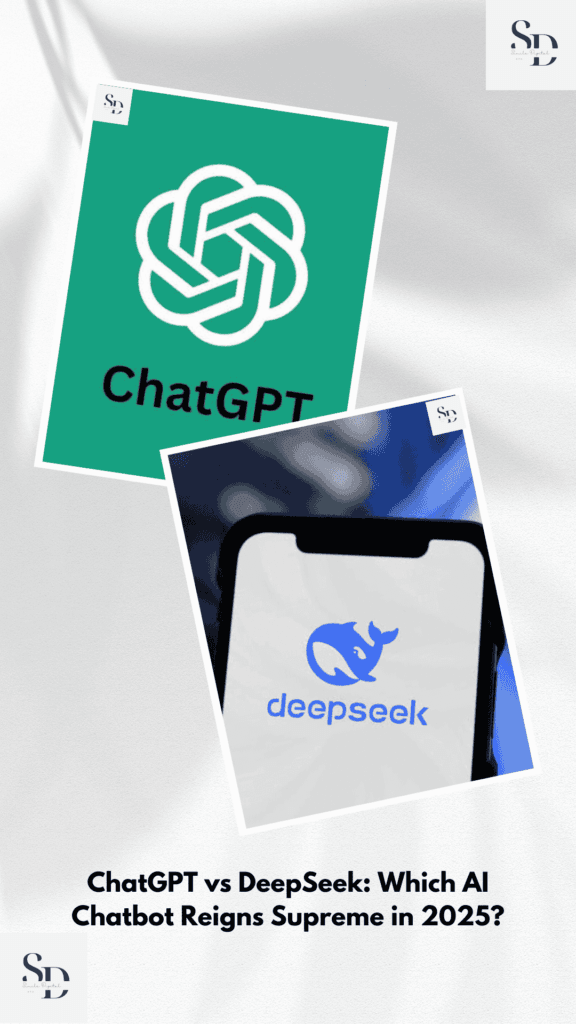
8. Context Retention & Memory
AI chatbots need to retain context within conversations for meaningful interactions.
ChatGPT: Can remember information within a session but does not retain memory once the session is restarted.
DeepSeek: Similar to ChatGPT, its memory is session-based, though its ability to retain multi-turn context varies.
9.Information Up-to-Date Status
AI models must provide recent and accurate data for factual queries.
ChatGPT: Knowledge cutoff varies by version (e.g., free version may have outdated data, while premium models access newer information).
DeepSeek: Also has knowledge limitations, but its reasoning ability helps provide fact-based conclusions.
10. Personalization & Customization
Some users require AI that can be customized for specific needs.
ChatGPT: Available in different model versions, with API options for businesses to tailor responses.
DeepSeek: Customization options are currently more limited.
11. Ethical AI & Bias Handling
AI must avoid biased responses and ensure ethical correctness.
ChatGPT: Trained to avoid controversial topics, but can sometimes be overly restrictive.
DeepSeek: Also focuses on neutral responses, though its training data influences its output.
12. Pricing & Subscription Plans
Cost is a factor for both individual users and businesses.
ChatGPT: Offers free and paid versions, with premium features available via subscription.
DeepSeek: Pricing is not fully developed yet, making cost comparison difficult.
13. Integration with Third-Party Applications
Businesses may need AI that integrates with different tools.
ChatGPT: Supports integration with apps and business solutions.
DeepSeek: Fewer integration options at present.
14. Security & Privacy
Data protection is crucial for AI interactions.
ChatGPT: Follows strict privacy guidelines, though data usage policies vary.
DeepSeek: Also prioritizes security but has fewer public details on its privacy framework.
15. Future Development & AI Innovation
The future growth of AI chatbots depends on ongoing research and updates.
ChatGPT: Continuously updated with new AI advancements.
DeepSeek: Still evolving but showing strong potential in AI development.
Conclusion
Which AI Model is Right for You?
After a detailed comparison of 15 factors and analyzing common user queries, it’s clear that ChatGPT and DeepSeek cater to different needs rather than directly competing in every aspect.
Choose ChatGPT if you need
Human-like conversations
Creative content writing & storytelling
Multilingual support
Engaging, interactive responses
Easy-to-understand explanations for coding and general knowledge
Choose DeepSeek if you need
Logical, research-based responses
Structured and highly factual content
Advanced reasoning for complex queries
English & Chinese language support
Technical explanations with deep analysis
Ultimately, both AI models excel in different domains—ChatGPT is better for casual users, writers, and general conversations, while DeepSeek is better for research-based tasks and factual accuracy. The right choice depends on your specific requirements, preferences, and use cases.
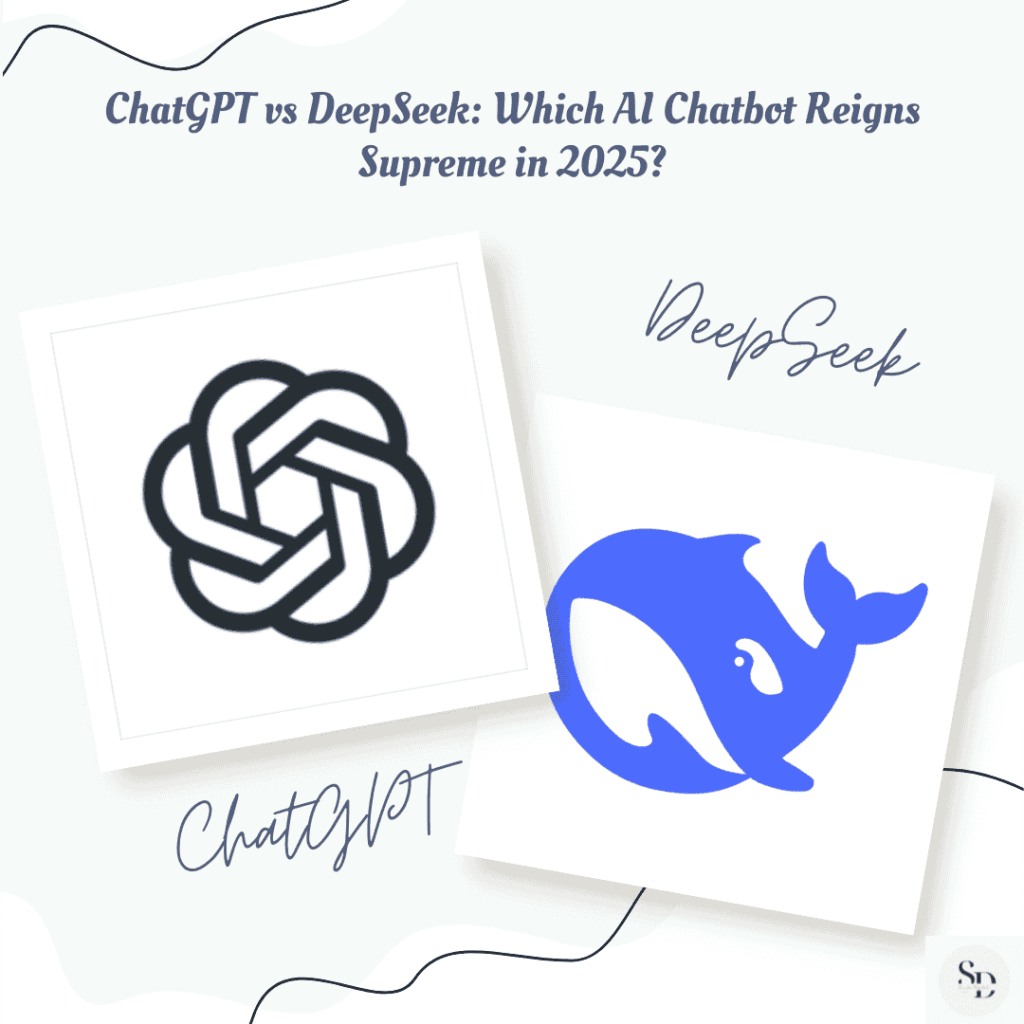
Thank You for Reading!
We hope this detailed comparison of ChatGPT vs DeepSeek helped you understand the differences and choose the best AI assistant for your needs. AI technology is constantly evolving, and both models will continue to improve over time.
For more comparisons and insights, visit our blog regularly. If you have any questions or suggestions, feel free to leave a comment or contact us directly.
Happy Exploring!
Frequently Asked Questions (FAQs)
How secure and private are ChatGPT and DeepSeek?
ChatGPT follows strict data guidelines, ensuring user interactions are not stored for long-term tracking. However, OpenAI’s policies on user data usage vary based on version and region.
DeepSeek also follows privacy protocols, but since it is newer, detailed transparency on data policies is still emerging.
For highly sensitive queries, it’s best to avoid sharing personal or confidential information with any AI chatbot.
Are these AI models free to use, or do they require payment?
DeepSeek is still developing its pricing model, and its availability might depend on future updates.
If cost is a concern, ChatGPT’s free version is a great starting point, but paid versions unlock better performance.
How do ChatGPT and DeepSeek handle real-time knowledge updates?
ChatGPT has a knowledge cutoff, meaning free versions may not have the latest information. However, newer versions (like ChatGPT Plus) provide more updated responses.
DeepSeek also has knowledge limitations, but it focuses on deep reasoning to analyze facts better. However, it may not have access to real-time data.
For the most recent information, it’s always recommended to verify responses with official sources.
Which AI model offers better multilingual support?
DeepSeek primarily focuses on English and Chinese, providing better performance in these languages but limited support for others.
For multilingual communication, ChatGPT is more versatile. If you primarily need English or Chinese support, DeepSeek is optimized for those languages.
Which AI chatbot is better for content creation and storytelling?
ChatGPT is superior in creative writing, generating engaging articles, storytelling, poetry, and marketing copy. It understands context and literary styles, making it a go-to choice for writers.
DeepSeek, while capable of generating structured content, is more factual and less imaginative. It is better suited for technical writing or research-based reports rather than storytelling.
If your goal is creative writing, poetry, or storytelling, ChatGPT is the best choice. For structured factual content, DeepSeek performs well.
How do ChatGPT and DeepSeek handle coding and programming tasks
ChatGPT is well-known for its ability to generate, debug, and explain code in simple terms. It supports multiple programming languages and is great for beginners and experienced coders alike. However, it can sometimes produce code with minor errors.
DeepSeek also provides highly structured coding assistance, but it is more logic-focused rather than conversational. While it generates technically accurate code, it may not be as intuitive or user-friendly as ChatGPT for learning programming concepts.
For interactive coding help, ChatGPT is better, but for logical programming queries, DeepSeek holds an advantage.
Which AI model is better for general conversations – ChatGPT or DeepSeek?
ChatGPT is designed for human-like conversations, making interactions more engaging, fluid, and natural. It can handle humor, emotions, and creative discussions, making it suitable for casual users, writers, and social interactions.
DeepSeek is more structured and logical, focusing on accuracy and deep reasoning. While it provides fact-based answers, it may not be as conversationally adaptive as ChatGPT.
If you need an AI for general conversations and creative writing, ChatGPT is preferable. However, for technical or research-based discussions, DeepSeek might offer more precise responses.
Note for Readers
If you’d like to read this blog in your regional language or any other international language, simply click on the Google Translator option located in the bar at the top of the page. This feature allows you to select your preferred language and enjoy the content in a way that’s comfortable for you. We hope this makes your reading experience more enjoyable and accessible!
Disclaimer
The information provided in this article is for educational and informational purposes only. While we have made every effort to ensure accuracy, AI technologies are constantly evolving, and some details may change over time. Users are encouraged to verify AI-generated content, especially for professional, technical, or research-based applications.
This comparison does not promote or endorse any specific AI platform but aims to provide an unbiased, fact-based evaluation to help users make informed decisions.
For more exciting topics, explore our other articles here
Gul Panag vs Kangana Ranaut: A Deep Dive into Their Filmography & Careers
Top 5 Comedy Sitcoms Available on Hotstar Vs. Apple TV – A Laughter Showdown!
Bollywood Top 15 Actors Vs Actresses
5 Comments